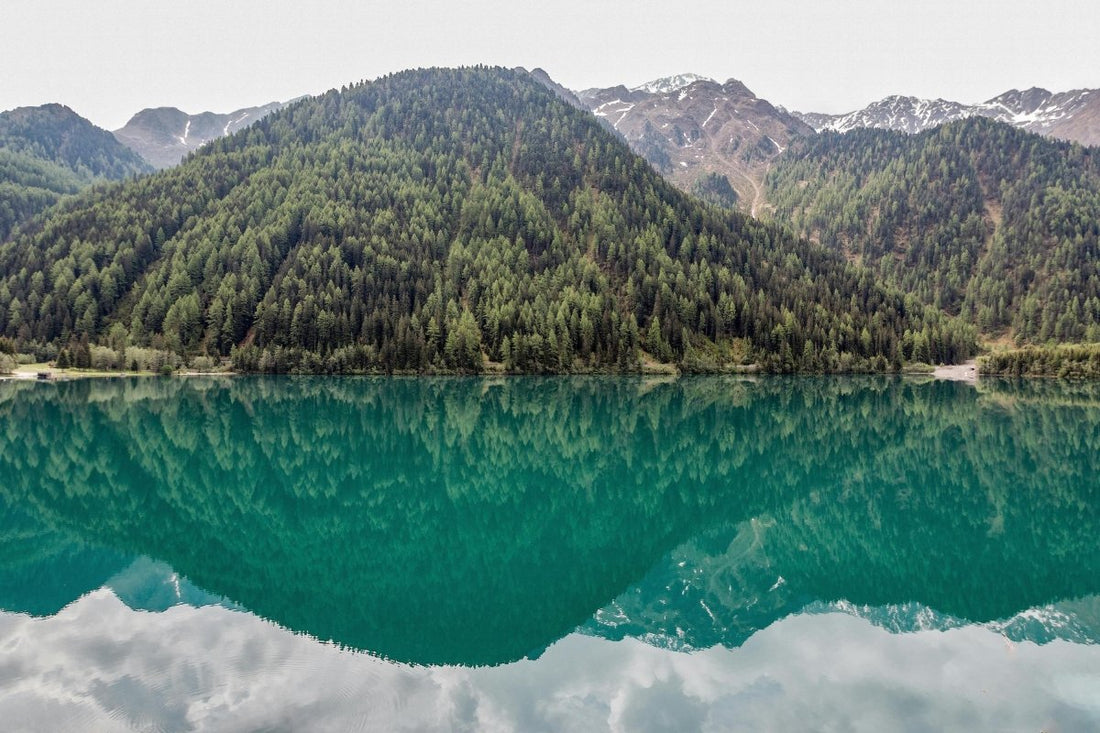CO2 is the most commonly cited greenhouse gas in connection with climate change and the quantities of carbon dioxide emitted today are causing noticeable damage to the planet. In order to preserve a natural environment worth living in for animals and humans in the long term, humanity must take two important factors into account. Firstly, we must greatly reduce our greenhouse gas emissions in order to minimize the emission of further CO2. At least as important, however, is the preservation of natural CO2 reservoirs - these are natural ecosystems that bind and store a particularly large amount of CO2 from the atmosphere. Here we present the three largest CO2 reservoirs and their functions.

Picture: The characteristic green of plants not only looks beautiful, but also converts CO2 into oxygen.
CO2 storage trees
Trees are known to be the "lungs of the world". Through photosynthesis, they filter CO2 from the air and release fresh oxygen back into the atmosphere - the carbon is stored in the process, which is why the CO2 storage capacity of forests and rainforests is particularly important. When forests are cut down, this impairs the storage capacity of the forests, but the stored CO2 is naturally released again when the wood is burned. The "lifetime performance" of individual trees illustrates just how much this is. An 80-year-old Douglas fir, for example, has stored an average of 3.7 tons of CO2 - as much as a return flight from Zurich to Montreal (Canada)!

Picture: The high plant density in the rainforest ensures a particularly strong CO2 storage effect.
CO2 storage ocean
The CO2 reservoir ocean is just as important as the CO2 reservoir forest. The oceans and the plants living in them convert CO2 into oxygen through photosynthesis - just like 'ordinary' plants. The CO2 level in the ocean remained largely stable over the millennia until the beginning of global industrialization, and the CO2-oxygen exchange between the oceans and the atmosphere was in balance. Since industrialization, however, the oceans have increasingly become a kind of CO2 landfill - the absorption capacity of the oceans is reaching its limits and the water is becoming acidic. In the long term, acidic water leads to the death of various marine organisms and plants and to coral bleaching. This also reduces the oceans' photosynthesis capacity, which in turn leads to even more acidic waters - a vicious circle that needs to be broken.

Image: Coral reefs in the ocean are particularly efficient at storing CO2 - and are highly endangered by the acidification of the world's oceans.
Moor CO2 storage
The fact that soils play an important role in CO2 storage is less well known than the importance of forests and oceans. CO2 storage in the soil includes the gas that is bound in deeper layers of the earth, but carbon dioxide is also literally "locked up" in bogs or permafrost. The draining of peatlands and the warming of polar climate zones releases this bound CO2 again and destroys the absorption capacity of living peatlands and the plants they contain.

Image: Soils and peatlands also absorb CO2 - a fact that is often forgotten.
Protecting system-critical CO2 storage facilities
It took a very long process in the history of the Earth to make life on Earth possible. Plants in particular, together with the absorption capacity of soils and oceans, ensured that the ammonia-carbon mixture of the early atmosphere changed very slowly. The result is the biodiversity of the "blue planet". The current high and still increasing global CO2 emissions are shaking the foundations of the natural CO2 cycle - and the damage to important CO2 reservoirs such as forests, oceans and soil is exponentially increasing the consequences of this development. It is therefore more important than ever to draw attention to these biological processes and to be more mindful of our own consumer behavior.
NIKIN is committed to doing just that: on the one hand, we want to use informative blogs like this to help create greater environmental awareness and, on the other, offer an alternative to mass consumption with the help of our products. For each of our products we plant a Tree and thus promote the preservation of one of the most important CO2 reservoirs: the forest. Support us on this mission - together we keep the world green, #treebytree!




















